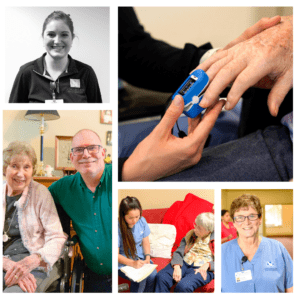Occupational Therapy (OT) often involves therapy based on the needs or struggles a patient experiences at home. OT is used to determine the cause of these needs or struggles and propose plans and solutions to them.
In-Home Occupational Therapy
In-home OT is much different from in-clinic OT. This can be very important for people who have needs related to independence in their homes.
OTs who visit patients’ homes are able to observe how a patient functions within that environment. This process leads to the creation of custom plans that can help a patient thrive at home without needing to think about moving (or making other large changes).
In-Home OT Evaluations
OT evaluations conducted in a patient’s home require the presence of the patient to be effective. This allows an OT to observe a patient and ask questions in real-time. Communication during an in-home OT evaluation is crucial to the development of an optimal plan.
OTs are able to evaluate and make interventions or recommendations based on the daily routines of a patient. This can include seemingly simple things like making adjustments to how certain tasks are carried out or recommending simple devices to make a task easier.
The difference between an in-home OT evaluation and an in-clinic OT evaluation comes down to details. If you tell an OT “I have trouble loading my dishwasher,” you may be leaving out crucial information an OT would clearly see in-person.
The scope of in-home OT is huge and can make impactful changes that may otherwise go unnoticed. In-home OT is an organic process, unlike many questionnaires or in-clinic visits. This is because a person is doing the things they do every day and doing them how they do them every day. These are the types of things that often go unnoticed in in-clinic visits.
Note that this section is not meant to discount the huge importance of in-clinic OT visits. It is meant to show the impact in-home OT can have when other things are not working.
Other Environmental OT
In-home OT evaluations are similar to evaluations conducted in other environments, like an office or school. The difference is that some changes in environments not owned by the client may need to be approved by someone else.
OTs often have environmental solutions that won’t actively change a non-home environment for other people who work or live there. Be sure that you talk to your OT about options if you are having trouble navigating a non-home environment.
Charlin Health Services
At Charlin Health Services, we pride ourselves on honor, integrity, excellence, compassion, dignity, and trust. If you have any needs or questions about health services, hospice care, or other medical needs, please send us an email or give us a call.
About Our Occupational Therapy Expert
Kathy Luongo is an Occupational Therapist at Charlin Health Services. With over 25 years of experience as an OT, Kathy has worked with clients in California and Texas. Her experience spans most areas of OT–from the NICU to in-home care.
Kathy obtained her BBA in marketing from Loyola Marymount University, College of Business Administration. This was shortly followed by a post-baccalaureate in occupational therapy.
Kathy has also served as a physician liaison, program coordinator, and therapist on several rehabilitation units.



